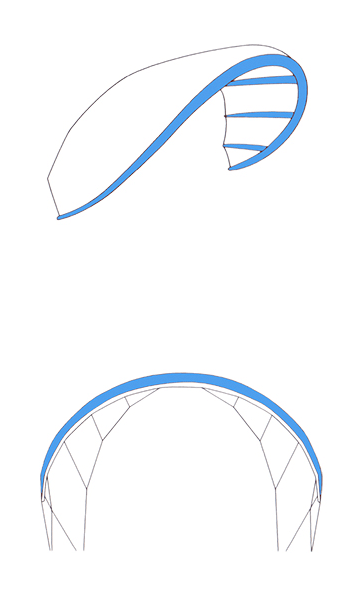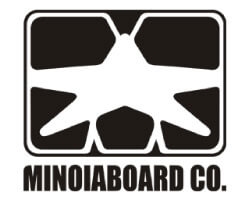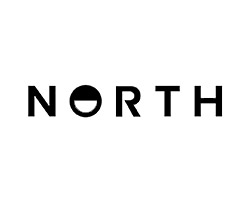Kitesurfing equipment: kites, boards, safeties, clothing
In this article, we will try to understand the types and characteristics of kitesurfing equipment, such as the various types of kites with bars and lines, boards, safety systems and the clothing needed to practise this adrenalin-pumping sport.
Kitesurfing equipment: types and characteristics
Kitesurfing, an action sport that combines wind sail and board to create a compelling experience on the water, requires specific equipment to ensure both rider safety and enjoyment. From kite to board, each component plays a crucial role in making this exciting sport possible. Let's explore the main types and characteristics of kitesurfing equipment.
1. Kite
The kite is the central element of kitesurfing. It is used as a means of propulsion (using wind power) and provides the traction needed to glide over the water. Kites can come in different shapes and sizes, including:
C-Shape: This type of kite has a C-shape with a more "arched" shape, suitable for quick manoeuvres such as fast kite loops, covers a smaller wind range and is more difficult to launch from the water, it is typically used in Freestyle and Wakestyle disciplines.
Rider level: intermediate/advanced.Bow/SLE (Supported Leading Edge): With a more open shape than the C-Shape, bow-shaped kites are ideal for beginners as they offer easier re-launching and more consistent traction for greater aerodynamic efficiency.
Rider level: all levelsHybrid: This design combines the positive characteristics of the C-Shape and Bow to provide a versatile range of performance, these kites are preferred especially if you are a beginner.
Rider level: all levels.- Foil: unlike the other kites they have no inflatable parts in fact they are instead made up of a variable number of cells also known as 'caissons' running from the front side to the back side. As these cells inflate (through holes in the front), they give the kite a shape suitable for flying. In kiteboarding, the cells are closed to prevent water from entering the kite in the event of a fall, so the inflation caused by the wind is obviously slower than with an open-cell kite such as those used in snowkiting.
C-Shape | Bow/SLE | Hybrid | Foil |
 |  |  |  |
2. Kitesurfing board
The kitesurf board is the element on which the rider stands during the activity. Boards vary in size, shape and materials according to preference and water conditions. Some features to consider include:
Size: Larger boards offer more buoyancy and stability, ideal for beginners, while smaller boards offer more manoeuvrability and high performance.
Shape: Boards can be directional (similar to a surfboard) or bi-directional (symmetrical), hybrid or ultimately with Foil for 'flying' on the water. The choice depends on the preferred style.
Materials: Kitesurf boards are often made of lightweight, strong materials such as carbon, fibreglass or wood to ensure optimum performance and durability.
3. Bar and Lines
The bar and lines connect the kitesurfer to the kite and allow them to control its direction and traction. Important features include:
Bar: The bar is the main point of contact for the rider. It can be adjustable in length to suit the rider.
Lines: Lines transmit the rider's actions to the kite. They can be made of high-strength materials such as Dyneema to ensure safety and reliability and can vary in length.
Trim (also called Depower system): is located on the centre lines and allows the kite's power to be reduced in high winds or dangerous situations.
4. Safety Systems
Safety is of primary importance in kitesurfing and necessarily includes a system that allows the practitioner to quickly release himself from the kite in an emergency.
Quick Release: This is the primary safety system allows the rider to quickly free themselves from the kite in dangerous situations. The kite remains connected to the person with the trapeze via the safety leash. .
The safety leash: by activating quick release of the leash you completely disengage from the kite, it is essential that it is NOT positioned behind the trapeze but in an absolutely comfortable position that you can reach with both hands!
In an emergency situation this 'Sequence' is activated: 1) I let go of the bar 2) I activate the Quick Release 3) I activate the quick release of the leash 4) I cut the lines 5) I remove the trapeze (not necessarily easy), options 4 and 5 are rarely used and if they must be used it probably means that something has been done wrong on the ground e.g. faulty equipment then a failure to check the ground or incorrect use.
5. Clothing
- Wetsuit: this should be chosen according to the climate and location but above all the water temperature conditions and the amount of wind. For colder waters, a thick wetsuit with 4 or 5 millimetres of neoprene may be essential, while for warmer waters a thinner 2 millimetre wetsuit may be sufficient. Make sure the wetsuit is snug against the body to prevent water from getting inside.
- Neoprene socks/gloves and head coverings are only necessary when it is really cold, typically used at lakes (Garda to name but one) in the periods March April May or November, of course it also depends on each person's perception of cold.
- Trapeze: this is the element with which the rider is bound to the kite and from which he gets traction.
- Impact vest: this is a kind of padded vest that allows you to better absorb impacts with water in the event of a fall.
- Helmet: there is little to say it is necessary, compulsory in some spots but always recommended as it protects the head!
In conclusion, kitesurfing equipment is very varied, very specialised and must meet the needs and abilities of each rider. The choice of kite, board and accessories must be well thought out to ensure a safe and rewarding practice of this exciting water sport.
Rental price table
FULL RENT*light wind kite ( 13-15-17m ) + 10 € | 3h - €55 | 1 day - €75 | |
KITE RENT*light wind kite ( 13-15-17m ) + 10 € | 1 day - €50 | ||
BOARD RENT | 1 day - €25 | 3 days - €60 | 1 week - €110 |
SURFBOARD RENT | 1 day - €35 | ||
WING FOIL RENT | 3h - €55 | 1 day - €75 | 10 uses - €500 Wing Sup 40 € |
ACCESSORIES RENT | Wetsuit €20 | Harness €15 | Accessories €10 |
RESCUE SERVICE | single €20 | ||
Our brands



All details on the equipment rental page

KTS Kite Tour Stagnone
The Kitesurf Stagnone KTS school is based in Marsala in the beautiful setting of Stagnone in the province of Trapani. The Kite Tour school offers courses for all levels from beginners to advanced kite lessons with IKO-certified instructors. For us, kitesurfing is not just a profession but a real passion.
Follow us on our social networks
Articles
IKO 2025 assistants/instructors course
Kitesurfing equipment
Sicilia Kitesurf lesson
IKO 2024 assistants/instructors course
Marsala Kitesurf lesson
Useful Links
Contacts
Opening Hours
Monday to Sunday 9am to 8pm